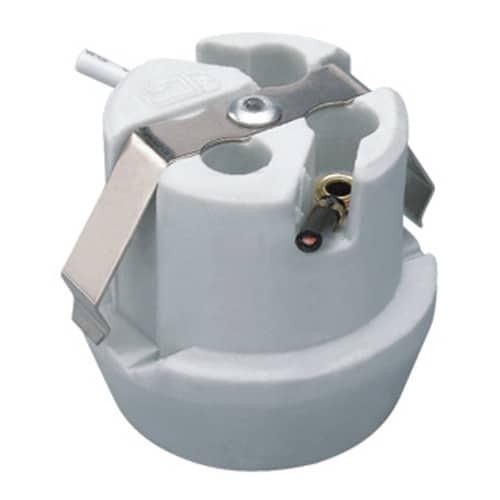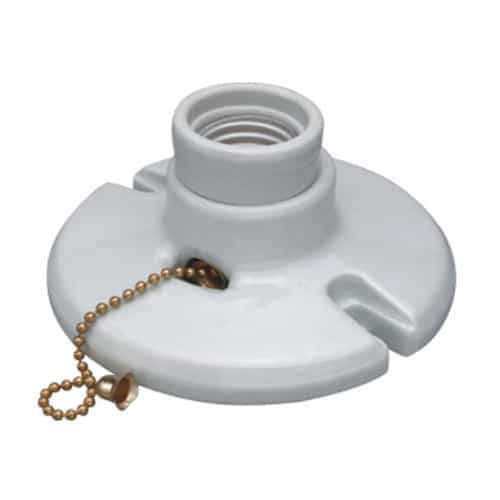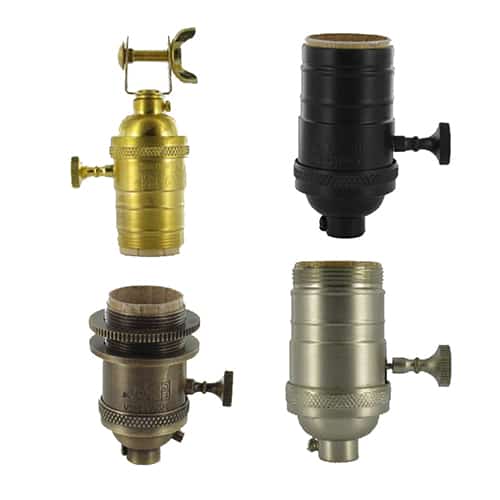One of the things you need to know when it comes to replacing a light bulb is the size of the base. If you choose the wrong base size, you’re going to get frustrated because the bulb won’t fit, or it won’t work the way it’s supposed to. You need to know the standard light bulb base sizes used in the US to make sure your bulbs fit and work the way they should.
The standard light bulb base size in the US is E26. E26 is a 26mm screw base used in a lot of household lamps and fixtures.
This guide will walk you through everything you need to know about the standard light bulb base sizes used in the US.

What Is the E26 Base?
The E26 base is by far the most common light bulb base found in homes across the United States. The “E” stands for Edison, after Thomas Edison, who invented the screw-in bulb base, and “26” refers to the diameter of the base, which is 26 millimeters. This base is designed to screw directly into most household lamps and light fixtures.
The E26 base is incredibly versatile and can be found on a wide range of bulb types, including:
- Incandescent bulbs
- Compact fluorescent lamps (CFLs)
- LED bulbs
These bulbs are used in various settings, from ceiling fixtures and table lamps to outdoor lighting. The E26 base’s widespread use makes it easy to find replacement bulbs for almost any standard fixture in the US.
Other Common Base Sizes in the US
While E26 is the most widely used base size in the US, it is not the only option. Depending on the type of lighting fixture, you may encounter other base sizes, particularly in specialized lamps or smaller decorative lights. Some of the other common base sizes include:
- E12 (Candelabra Base):
The E12 base is much smaller than the E26, with a diameter of 12 millimeters. This base is commonly found in decorative fixtures, such as chandeliers, night lights, and ceiling fan lights. E12 bulbs are often used with flame-tip bulbs or other smaller, more decorative lights that complement the style of the fixture. - E17 (Intermediate Base):
The E17 base is often used for appliance bulbs, such as those found in refrigerators or ovens. It’s slightly larger than the E12, with a diameter of 17 millimeters, but is still smaller than the standard E26. You might also find this base in some specialty lamps and small fixtures. - GU10 and GU24 Pin Base:
While less common than screw-in bases, GU10 and GU24 bases are often used in spotlights and energy-efficient fixtures. These bases have two pins that lock into place rather than screwing in. GU10 is typically found in track lighting and recessed fixtures, while GU24 is designed for energy-efficient bulbs in both residential and commercial applications. Many LED bulbs use these bases, making them popular for modern lighting installations.
Knowing these alternative base sizes can help you navigate more specific lighting needs, especially for decorative or specialty lamps.

How to Identify the Base Size of Your Bulb
Determining the base size of your existing light bulb is simple and ensures you purchase the right replacement. Here’s how you can easily identify the base size:
- Remove the bulb from the fixture and inspect the metal or plastic base. In many cases, the base size will be printed directly on the bulb, near the metal screw part. Look for markings such as E26, E12, or GU10.
- Measure the base diameter if no markings are visible. Using a ruler or caliper, measure the width of the bulb’s base. For instance, an E26 base will measure 26 millimeters, while an E12 base will measure 12 millimeters. Make sure to match this measurement with the socket size in your fixture.
- Check the lamp’s manual or packaging if available. Many fixtures will specify the type of bulb and base required, especially when dealing with specialty lighting like GU10 or GU24 sockets.
By identifying the base size before purchasing a replacement bulb, you can avoid compatibility issues and ensure a secure fit in your fixture.
Differences Between US and International Standards
Although E26 is the standard light bulb base size in the US, it’s important to know that there are minor differences between US and international standards, particularly in Europe. The European equivalent to the E26 base is the E27 base, which measures 27 millimeters in diameter.
While the difference between E26 and E27 is only 1 millimeter, it can still impact compatibility in some fixtures. In many cases, E26 and E27 bulbs are interchangeable due to their similar size and design, but some fixtures may be more restrictive in terms of fit. It’s especially important to be aware of this difference if you’re purchasing bulbs from international suppliers or using fixtures designed for European markets.
In addition to E27, you may also encounter other regional standards, such as the B22 bayonet base commonly used in the UK, Australia, and India. Unlike the screw-in design of E26 and E27 bases, B22 bulbs use a bayonet mechanism, requiring the bulb to be inserted and twisted into place. These are not interchangeable with Edison screw bases, so if you’re purchasing bulbs internationally, make sure they are compatible with your fixture.

Why Base Size Matters
Choosing the correct bulb base size is critical for the following reasons:
- Secure fit: The bulb needs to fit securely into the socket to ensure a proper connection with the electrical contacts. A loose or incorrect base can lead to flickering lights or even failure to turn on.
- Performance: Using the wrong base size can affect the bulb’s performance, as a poor connection may result in flickering, reduced light output, or intermittent operation. A properly fitted bulb will ensure optimal light distribution and energy efficiency.
- Safety: Incorrectly sized bases can cause loose connections, leading to electrical arcing or overheating, which poses a safety hazard. To prevent potential fires or damage to your fixture, always ensure the base size matches the socket.
- Energy efficiency: With the increasing shift toward LED lighting, choosing the right base ensures that you can safely replace traditional incandescent or CFL bulbs with more energy-efficient LED alternatives. Many LED bulbs are designed to fit standard E26 bases, making the transition to energy-saving lighting easy.
Where to Buy E26 and Other Standard Base Bulbs in the US
In the US, bulbs with standard base sizes like E26, E12, and E17 are widely available at hardware stores, big-box retailers, and online marketplaces. You can find a variety of bulb types that fit these bases, including:
- Incandescent bulbs
- LED bulbs
- CFL bulbs
- Smart bulbs (like those compatible with voice assistants or apps)
Popular retailers such as Home Depot, James Lighting, and Walmart offer extensive selections of bulbs, and online stores like Amazon provide a convenient way to compare options and make purchases. If you’re looking for specialty bulbs, such as GU10 or GU24, most large retailers also carry these, though you may need to search in the lighting or specialty bulb sections.
When shopping, make sure to check both the base size and bulb type to ensure compatibility with your fixture and desired light output.

Final Words
Picking the right light bulb base size is important to make sure your bulb works and is safe in your light fixture. The E26 is the standard for most household lighting in the US. It’s the one you’ll use most often when you’re buying a bulb to replace in a standard fixture. But, understanding the other common base sizes like E12, E17, and GU10 can help you make smart decisions for specialized lighting needs.
Make sure you match the size of the base with your fixture, check the wattage and type of bulb, and think about using LED bulbs to save money and have great lighting in your house. When you have the right size base, your lighting will work great.













